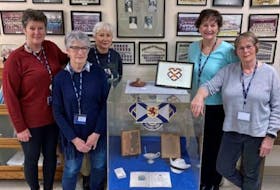In 1957, control of DOSCO, The Dominion Steel and Coal Corporation, was sold to Hawker Siddeley, a British-controlled company that was based in Mississauga Ont.. The newly renovated and updated plant attracted the company as an investment that would require little, if no, attention or investment.
In 1961 Hawker Siddeley reduced the work force at the Sydney Steel plant to 3,200. The company then decided that transporting finished steel was too expensive so they would build a mill in Quebec that would refine unfinished Sydney steel.
Soon Hawker Siddeley decided that they would integrate the Quebec plant, which would make both finished and unfinished steel. This decision made the Sydney Steel Plant obsolete.
On Black Friday, 13 October 1967, the company announced that the Sydney steel plant would cease all operations on 30 April, 1968.
The newspapers reported: “Shock waves thundered throughout industrial Cape Breton today in the wake of an announcement Friday Night by Hawker-Siddeley and DOSCO that the Sydney Steel Mill, economic backbone of this city, will be closed completely by April 30, 1968.”
Everyone outside of the company was shocked. The union was taken by surprise. Not even the politicians knew this was coming and they were angry.
The shutdown was to be gradual, with the majority of closure to be completed by the end of December. There was very little time and finding a new buyer for a non-functioning plant would be nearly impossible.
The community realized that this was not a problem for just steelworkers. They realized that this was a community problem. The closure would impact all the residents of Sydney from the churches to business owners. The community needed to act as one.
The community decided it would demonstrate the closure by holding a march of concern. A small group of people organized the parade. This group included Allan Sullivan, Ann Terry, Vince Morrison, Fr. William Roach, Dr. Neil Donovan, Kingsley Brown Sr. and Jr., and Sandy Campbell to name just a few. They contacted service clubs, community groups, unions, and asked them to march.
The original plan was to start at the Sydney Forum, but organizers quickly realized that venue was too small. The only facility large enough at the time was the race track, which would become the Tartan Downs. So the march began at the Sydney Shopping Centre and stretched to the race track.
The number of people that organizers hoped to attend meant that there would not be enough parking for all in one location. People parked all over the city and took buses, trains and other modes of transportation to participate in the parade.
It took well over an hour to get the participants of the parade through the gates at the racetrack. It had rained heavily the night before and the field was all mud. People did not seem to mind standing in the mud to have their voices heard.
G.I. Smith, Nova Scotia's premier, MP Allan MacEachern, Father William Roach and Eamon Park from the United Steel Workers of America were all invited to speak that day. The politicians were told to keep their speeches short and no one from the steel company was invited to speak.
While people gathered there were some songs sung. Charlie MacKinnon wrote “Let’s Save Our Industry” for that day. His fingers were frozen but he played the song over and over again and soon the crowd learned the words and sang along verse after verse.
In the end, the government heard the concerns of the people. They realized that the loss of the steel industry would be detrimental to not only the City of Sydney but also to the province. The province then took control of the Sydney steel plant from Hawker Siddeley and decided to run the plant for one year or until a buyer could be found.
In the end, the province ran the Sydney steel plant for thirty years. The industry was unable to make a profit and eventually the plant was sold to a Korean company that disassembled the plant and sold its pieces overseas.
Vanessa Childs Rolls is a local historian who lives in Sydney. Her column appears monthly in the Cape Breton Post. She can be contacted at [email protected].








